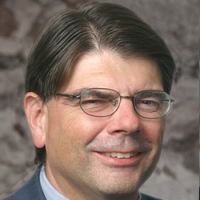One of the questions I get asked about regarding optical cable measurements is: “Why don’t my OTDR and jacket length markings agree?”
The answer depends on the type of cable being made. In the old days (when you and I were a lot younger) the normal procedure was for a loose tube cable to be stranded and have a small amount of excess length in the tube.
Also, since the tube was following a helix around a central anti-buckling member, the overall fiber path was longer than the cable length.
While many of these cables are still being made and the excess length of fiber over jacket length is a function of the diameter of the core (larger core/bigger helix), there are now a number of different types of cable designs available that would invalidate that assumption.
Assumptions for central tubes
The first and most common assumption is that for central tube designs – where all the fibers are pulled in together – the fiber length and cable jacket length are best if they are the same length (i.e., there is no difference between the jacket and fiber length). In reality, there are many problems with cablers actually over-tensioning the fibers in these types of cables, and you may, in fact, find that the fiber length is shorter than the jacket length.
This is a bad thing and typically happens on the cable reel where the fibers migrate to the inside of the tube and therefore subscribe a smaller circle. When unspooled in installation, the fibers typically pull back from the cable end or are in tension and, therefore, may have a shorter service life.
In addition, indoor cables are made both with and without a strand depending on the number of fibers and the manufacturer. Again, knowing the type of cable design before you measure the fiber and compare results is critical.
All of the above should muddy the waters enough to satisfy any alligator, however, I will add another component to why OTDR and mechanical measurements may not correlate.

Mechanical and digital print
Many of the mechanical printing systems, particularly inkjet or laser jet systems, depend on a digital encoder signal to calibrate distance. This is configured on each process line differently based upon the line manufacturer’s designs. The major optical cable specifications only require accuracy of mechanical measurements of 1%. These are typically considered accurate enough for most installation requirements.
A second point about mechanical and digital print on cable jackets regards when the print is applied in the process. Since jackets typically shrink upon cooling, if the print is put on at the end of the hot water trough, then shrinkage must also be estimated between print and final length.
A third area to muddy the waters is the use of bend-insensitive fibers. By using these fibers – which do not show significant loss until severe forces (bending radius, tension, micro-bend sensitivity, etc.) are applied – it is possible to elongate these fibers in central tube designs that are gel-filled, either loose tube bundles or ribbonized fibers, to show correct length even though they are under elongation tension. Generally, dry core designs will not show these behaviors.
Conclusion
So the answer to the question of how long the fiber should be in relation to the outside jacket is: It depends on the cable design, how the cable was printed in manufacture, and whether it is gel-filled. Lastly, the one item not discussed here but part of all OTDR training is this: You must have the correct index of refraction at the right wavelength before you measure. This means that you know the fiber manufacturer and have verified their datasheet.



